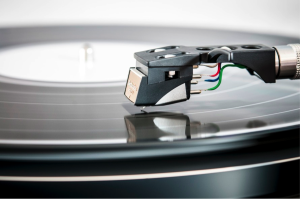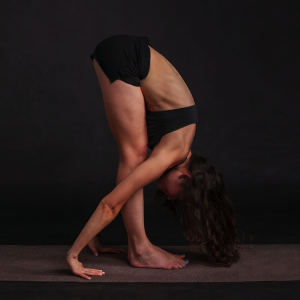Meditation for those who can’t sit still…
By Noémie Bouin
Did your best friend just tell you again how great meditation is and how it helped him so much?
Did you feel like an utter fool sitting cross-legged in your room trying meditation?
If you cannot sit still and are sick of new age guru advice for meditation, you might want to read on.
Meditation has recently become the hot new thing. All the benefits are being praised both on and offline. Scientists are getting crazy about this practice that used to be a hippie thing. Research has shown that meditation reduces your stress, it makes you happier, and it’s good for your health. Additionally, it seems like all successful business geniuses and entrepreneurs meditate, examples include the CEO of Salesforce.com; Marc Benioff ; Tim Ferriss and even Oprah Winfrey.
There are so many reasons for you and I to meditate but to be completely honest, how often have you tried to meditate and felt like an utter fool?
How often did you sit cross-legged in your room trying to empty your head of all the stress and only managing to stress yourself more because you feel like you’re not getting there?
I’m the first to raise my hand to these statements.
I’ve failed miserably so many times at meditating for the last three years that when someone advised me to meditate I would answer « it doesn’t work for me » and I’d carry on with my life. But sharing about these failures on meditation made me realize I was meditating regularly without even noticing, small exercises and reflexes that bring me the same benefits as meditation.
So before you give up all the gains of meditation because you cannot feel Mindfulness like Steve Jobs or do Transcendental Meditation like Martin Scorsese, here are some advice from a woman who would have read « Meditation for Dummies » if the book had ever been written.
After this article, I promise you, you won’t need that Meditation for Dummies book. These simple daily tricks will make up for all the mindfulness in the world.
Use apps
If you love your smartphone as much as I love mine, you’ll probably want to use some apps to help you with meditation, and it’s a good starting point. One of the positives of technology is that now everybody can have access to cool free meditation apps to support you and guide you through your meditation journey. I personally only use one called Sunny, which allows me to set a duration for meditation music and tune the sound there is in the music (birds, rain, waves, …). It’s a paid app for iPhone that I got for free one day on the App of the Day app.
But there are so many more. Some with guidance, some with melodies, timer, … One of my friends is especially fond of Omvana by MindValley. The meditation app is free and is super easy to use.
Finally, the founder of ‘Why not 3‘ has introduced me to a lot of golden apps for meditation, here are a few good ones for meditation.
- To track yourself with breathing, there is a device called the “Hearthmath”. It’s an amazing tracker and teacher on how to breathe. Inside you will find an infrared sensor that you attach to your earlobe and your iPhone.
Then, your iPhone goes on to tell you when you should breathe in and out, so that you can start synchronizing your heartbeat. (It even has cool levels, so you can train your meditation skills.) http://www.heartmath.com/
(No, we’re not an affiliate to any of these. We just love them.)
- PZIZZ is an application that you can find online for your phone. It has something called binaural beats that lets you have longer deep sleep. It also has a guided meditation option with a timer. So the voice will guide you out of your nap after 15-20-25-… min.
- Another app is “BRAINWAVE 32 BINAURAL PROGRAMS”. This one has a timer as well but no guided meditation. It’s very effective for Gamma-waves, which gives you the exact frequency to become more focused on your work. Try it out and let me know what you think in the comments below.
But,
Of course, there are dozens of other apps to help you meditate, however, let’s be honest, isn’t it a little bit too easy to use technology?
If you’re ready to try meditating without your phone, this article is definitely for you.
1) Start with breathing

Breathing is one of those things you can’t stop doing as it is crucial for survival. Everybody can breathe. So how about doing it not only for survival but to reduce your stress and improve your meditation skills? Deep breathing increases oxygen rate in your blood, allows for more muscle build-up and improves your pulmonary and cardiac systems.
Deep breathing is done not only using your chest but also your belly. To start deep breathing, choose a position in which your back is straight, whether standing, sitting or lying and rest your hand on your belly. Breath in through your nose, hold it (count to 3) and breathe out slowly through your lips. You should sense your belly go up when breathing in, and go down when breathing out.
Once you get used to deep breathing, you can drop your hand from your belly and increase the count while you hold your breath (up to 10).
What should you do about your mind? Just let it focus on your hand going up and down, on the air going in and out of your body.
I love deep breathing because you can do it in any situation without looking weird because you don’t even need to close your eyes. Once you don’t need your hand to focus, you can just take a 60-second break on your office chair without anybody noticing every time you do it.
2) Take advantage of transportation time for meditation
You know about these dozens of minutes you ‘lose’ in public transportation every day to commute to work? These minutes are your best opportunity to start relieving stress and do meditation. Just look out the window and let your mind wander, look at the scenery and focus on it. Start feeling the way your body moves with the bus or the train, breathe slowly and focus on your breathing. You can even start deep breathing if you feel like it. Doing this on the way to and from work is super effective; it allows your mind to clear up before you arrive to work in the morning or home in the night.
Of course, as you forget about all your worries you might forget to get off at the right stop as well. Just set an alarm with the approximate time of your trip minus 1 minute!
3) Enjoy doing nothing (especially not using your phone!) during meditation
Doing nothing is the best way for your mind to clear up. Of course, most of us have our smartphones glued to our hand (some to our face) and are not able to sit still and do nothing anymore – there’s always something to check on Facebook, Twitter or who knows which social media. But these moments of apparent boredom are an amazing opportunity for our minds to finally wander and lead us to peaceful thoughts.
In a moment where you don’t have anything to do – even for a few minutes like waiting for a friend in a café – put your phone away, and let your mind wander freely.
Don’t refrain any thought and let one lead you to another, without finding a meaning. If you need a starting point, observe your environment and focus on one element: is it a bag? What is it made of? Is the fabric more blue or green?
Let your mind wander off. You’ll slowly feel your brain focusing on creative thoughts rather than trivial work or home-related worries.
Doing this while you eat is called mindful eating. You actually start appreciating what you eat on a completely different level. On top of that, you get that time to also clear your mind and let your stress go.
A funny advice from a colleague was to do this in the toilet. Spending time in this place is a necessity and using this time to do nothing, especially not using your phone, and letting your mind wander can prove to be a surprisingly positive break for your mind.
4) Lie down and don’t be afraid to fall asleep
Lying on your back is a neutral position. Your body doesn’t feel uncomfortable. That’s crucial because we don’t want it distracting your mind. It’s one of my favorite positions to meditate as it not only allows my mind to rest but also my muscles; this is especially useful during an intense, stressful period in which you don’t get so much sleep.
To use this position, lie down (preferably not on a sofa) and make sure all your limbs are straight. Start feeling the surface on which your body is and how your body is spread on it. You can start deep breathing and closing your eyes or focusing on an element of your environment (the ceiling most probably) and then let your mind wander.
Meditation is definitely relaxing and of course, in this position, it is easy to fall asleep. At first, every time I fell asleep I woke up being disappointed because I thought this meant I failed at meditation and had just taken a nap. But waking up from this meditation is different than waking up from a regular nap, my mind was much more free and I felt lighter. As long as you don’t let your body go to deep sleep, the benefits of your pre-sleep meditation will show. To ensure this, set an alarm around 15-20 minutes from the moment you start meditation. Make sure you use a smooth sound to wake you up softly so you don’t get stressed again!
Once you get used to these 20min meditation sessions, you can use music to time your session. Set some relaxing meditation music, ideally instrumental music with nature sounds, and make sure it stops in 20 minutes. Your brain will wake you up when the music ends.
5) Use music

Going deeper in the use of music mentioned above, I have to admit sound is a great help for me to focus as it covers any noise that might distract me. Ideally, quiet music is the best way to get to the peaceful state you want to reach when meditating, however, it doesn’t have to be instrumental if you feel more comfortable with lyrics.
As usual, get into a comfortable, neutral position whether standing, sitting or lying. Closing your eyes, start the music and focus your thoughts on the sound of the music going in your ears, to your forehead through your head. If you use music with lyrics, focus on the voice of the singer, not on the words and imagine the flow of air from the singers’ lungs, until the lips.
What I like best is nature sounds with rain dropping and waves on a beach, some soft piano and a few birds singing. The music from Acerting Art youtube channel is worth checking out.
6) Be spiritual, if you are
Spiritual moments are – I believe – a type of meditation. Indeed, when praying, you let your mind focus on something bigger than your own worries. The ritual words and signs that open and close a prayer help make a clear cut between trivial life and spiritual mindfulness. Additionally, to get the answer from any bigger entity you’re talking to, you open your senses to grasp any sign of a response. Finally, the environment is also a great help: other people praying, the decoration, the smells, the silence or soft music; all of these contribute to taking your mind off daily worries and your senses to a relaxed openness.
So if there is a bigger entity you believe in and you want to start meditating, why not intensify the regularity of your spiritual moments? These will give your mind and body similar benefits than meditation and might also save your soul!
7) Talk to yourself during meditation
As weird as it sounds, talking to yourself is a good way of meditating. Who never cheered themselves on with a simple: “Come on [your name] let’s go.”
Before a speech or a stressful moment? Most of us do this without noticing, so how about making it a meditation routine?
But how you might think?
Go to an environment you feel comfortable in, take a comfortable neutral position. You don’t need to close your eyes if you don’t want to. Start thinking about positive things in your day, in your past, or things you’re excited for in the future. When you feel ready, start talking about these just as if you were talking to a friend, get your mind to focus on the sound of your voice, and on the positive feelings that these memories or exciting moments to come, are bringing you.
If you feel uncomfortable listening to the sound of your voice, you can start this exercise by having a conversation ‘in your head’ but I personally don’t find it as effective. Talking to myself in a meditating mood is especially useful in the moments mentioned above when I’m about to start a difficult task that stresses me out.
8) Use your body

There is a very deep connection between your body and your mind and if meditation and mindfulness can be very powerful body fuels, the relationship is actually double-sided. Using your body to control your emotions and your mind is a good way of achieving the state of peaceful mindfulness that meditation brings you to.
As research from Amy Cuddy and other scientists show (see her Ted talk), you can use power poses to reduce stress and increase self-confidence. Using some of the poses she shows is a life hack for positivity that I’ve been using since I learnt about it.
How should you do it?
Whether standing or sitting, straighten your back, relax your shoulder and put your chin up. Your hands can rest on your hips or on a table, but don’t put them in your pockets or on your laps. Hold for at least 2 minutes while breathing slowly. Feel your blood in your body and your muscles. When going back to your natural position, exhale through your mouth.
For a polished finish, you can stretch for a few minutes after doing this, carefully breathing in and out while you stretch your arms, your back and your legs. This will help you feel more connected
With all these meditation hacks for hyperactive people, there is now no excuse for you not to get all the benefits of meditation without formally meditating. Of course, you can use a combination of two or more of these techniques for your meditation sessions. And if you feel like going for more formal meditation, why not try the 6 phases of meditation from MindValley founder, Vishen Lakhiani?

Written by Noémie Bouin
Edited by Lova Kremer
References:
university of Massachusetts Medical Centre
Gannon College, Pennsylvania
Universidad Federal de Minas Gerais
https://www.youtube.com/channel/UCR9EuMWhNOQ5xbMRnAxl5Vg
Sunny: here
images: pexels.com, mindbodycoach.org





Leave a Reply
Want to join the discussion?Feel free to contribute!